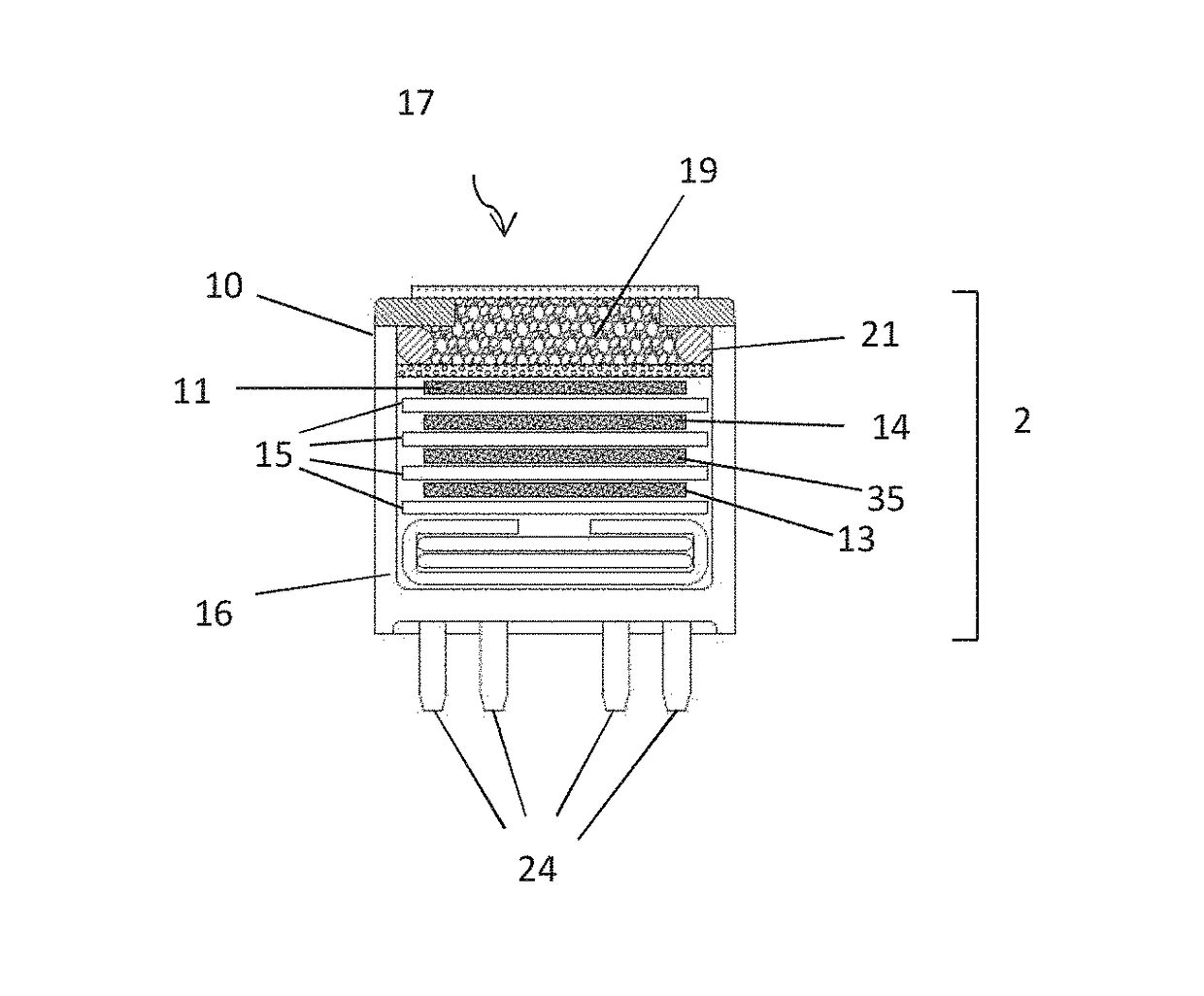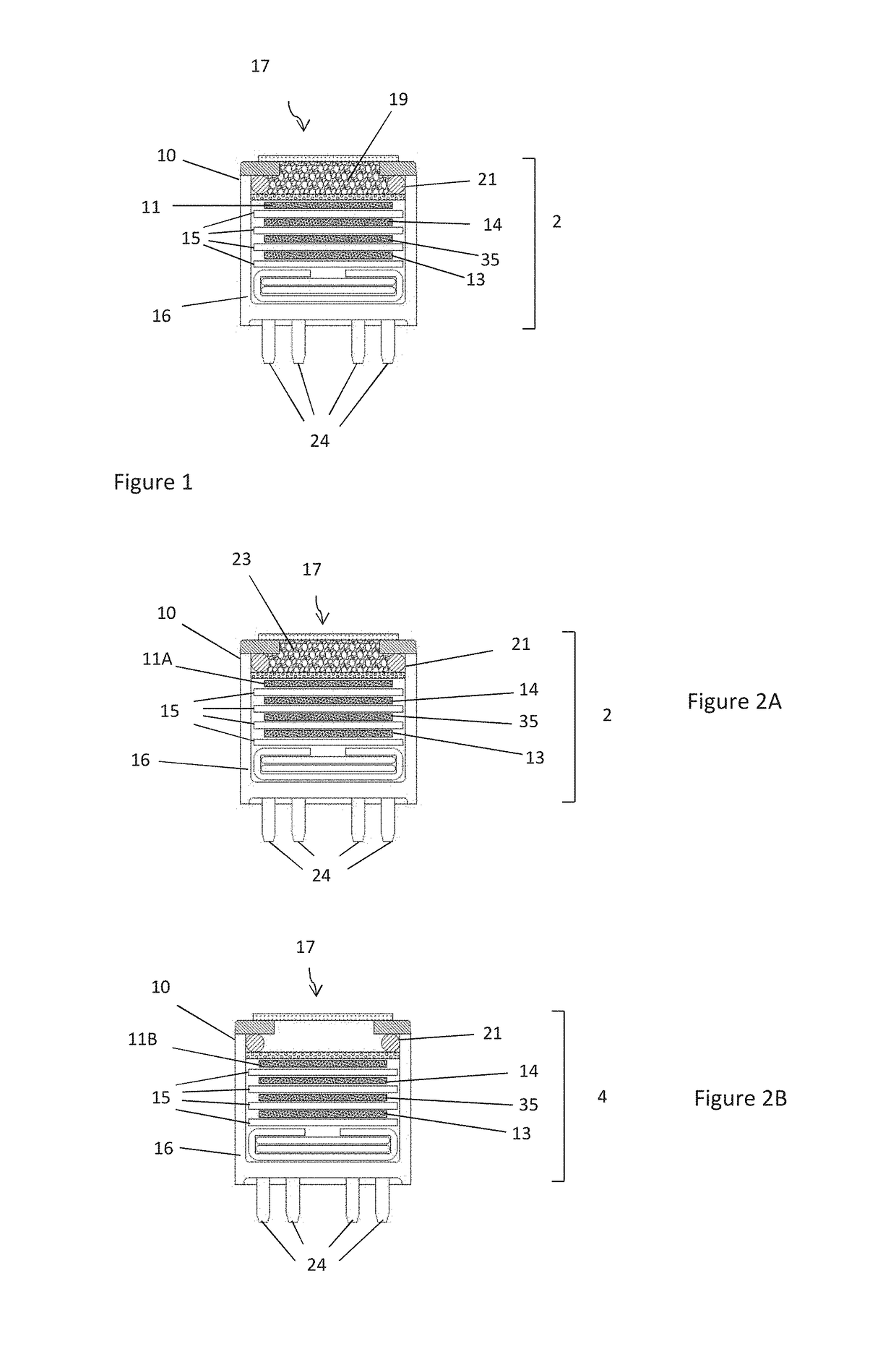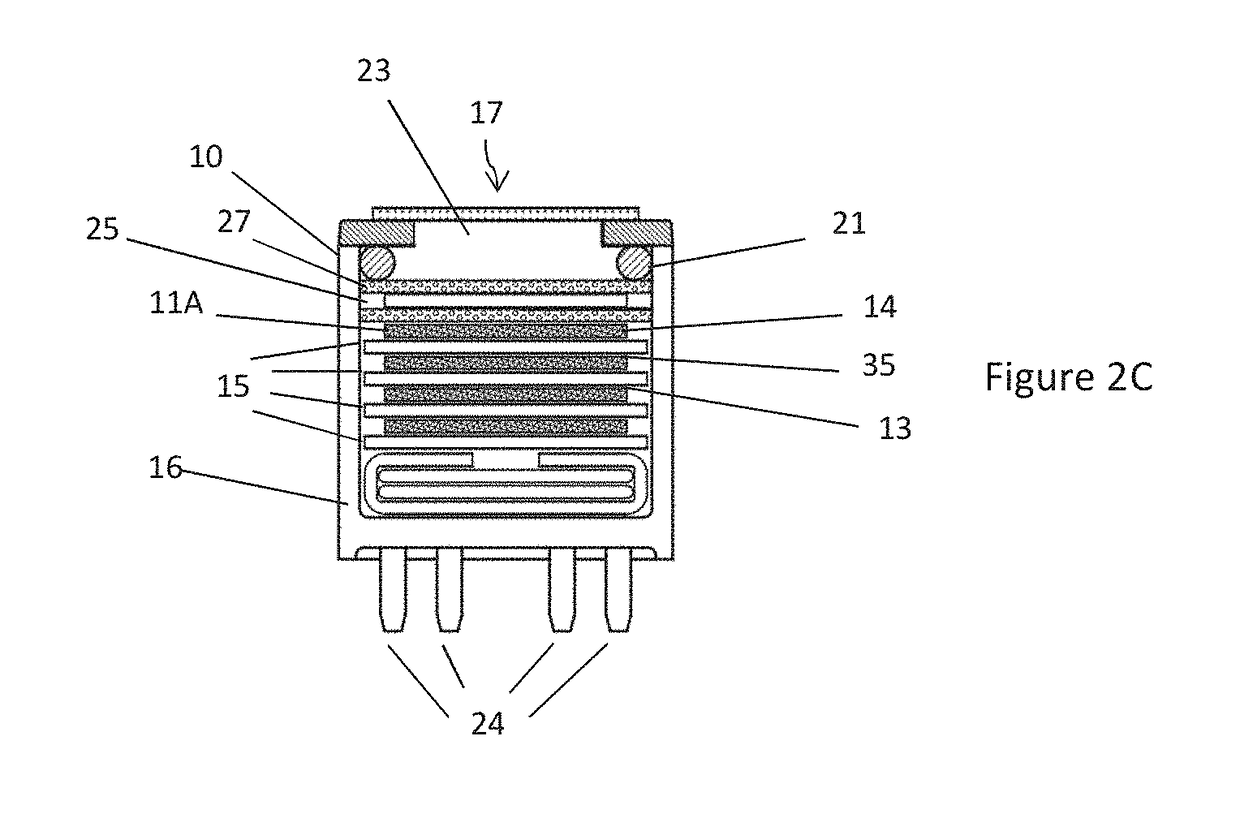Electrochemical gas sensor, filter and methods
a gas sensor and electrochemical technology, applied in the field of electrochemical gas sensing apparatus, can solve problems such as cross-sensitivity, and achieve the effects of low cross-sensitivity, high level of measurement accuracy, and high accuracy of measuremen
- Summary
- Abstract
- Description
- Claims
- Application Information
AI Technical Summary
Benefits of technology
Problems solved by technology
Method used
Image
Examples
experiment 1
[0122]In a first example, sensors according to FIG. 2A (filtered) were formed with Mn2O3, 99% purity (without PTFE) with and without the nitrogen dioxide pretreatment step described above. The response of these sensors and sensors according to FIG. 2B (i.e. unfiltered) to ozone and NO2 was compared. The unfiltered sensor is commercially available under the trade name OX-A421, manufactured and sold by Alphasense Limited of Great Notley, United Kingdom.
[0123]For these and subsequent experiments the first working electrode, the second working electrode, the additional electrode and the reference electrode are made of carbon graphite and the counter electrode is made of platinum black.
[0124]FIG. 6A shows the current response to 0.5 ppm O3 of (a) unfiltered sensors and (b) sensors in which the filter is 500 mg of untreated Mn2O3.
[0125]FIG. 6B shows the current response to 2 ppm NO2 of (a) a sensor in which the filter is 500 mg of untreated Mn2O3 and (b) a sensor in which the filter is 50...
experiment 2
[0128]In this example, sensing apparatus comprised a sensor according to FIG. 2A in which the filter (59) in the chamber (52) was formed with 500 mg Mn2O3, (without PTFE), and a sensor according to FIG. 2B (unfiltered).
[0129]For this and all subsequent experiments, the Mn2O3 had been treated with NO2 gas described above.
[0130]FIG. 7A illustrates the output current, over time, where the unfiltered sensor (trace (a)) and filtered sensor (trace (b)) are exposed in turn to zero air (zero air is air that has been filtered to remove most gases (NO2, NO, CO, SO2, O3, etc.) and is used as a calibrating gas for zero concentration), then 1 ppm NO2, then zero air, then 1 ppm O3 and then zero air and then a mixture of 1 ppm NO2 and 1 ppm O3. FIG. 7B shows the calculated O3 concentration (trace (a)) and NO2 concentration (trace (b)) which these traces represent.
[0131]This figure shows that with a mixture of NO2 and O3, the filtered sensor senses only NO2, whereas the unfiltered sensor detects bo...
experiment 3
[0132]Sensors according to FIG. 2A (filtered) were formed with filters comprising (a) 500 mg of Mn2O3, and (b) 450 mg of MnO2 were exposed to 2 ppm NO2 for 10 minutes and then to 2 ppm nitrogen monoxide NO for 10 minutes. FIG. 8 is a plot of the variation with time in cross-sensitivity of the sensors (a) and (b) to NO, i.e. the current response to NO as a fraction of the current response to a corresponding concentration (in this case ppm) of NO2.
[0133]This shows that the cross-sensitivity to NO is systematically lower with Mn2O3 than MnO2, and that this improvement persists.
PUM
 Login to View More
Login to View More Abstract
Description
Claims
Application Information
 Login to View More
Login to View More - R&D
- Intellectual Property
- Life Sciences
- Materials
- Tech Scout
- Unparalleled Data Quality
- Higher Quality Content
- 60% Fewer Hallucinations
Browse by: Latest US Patents, China's latest patents, Technical Efficacy Thesaurus, Application Domain, Technology Topic, Popular Technical Reports.
© 2025 PatSnap. All rights reserved.Legal|Privacy policy|Modern Slavery Act Transparency Statement|Sitemap|About US| Contact US: help@patsnap.com



